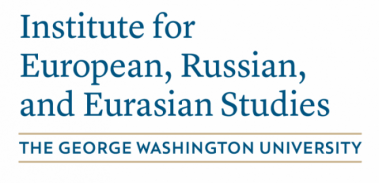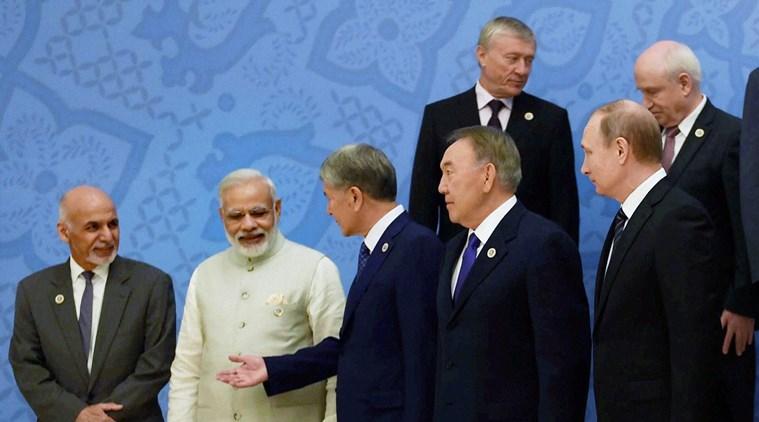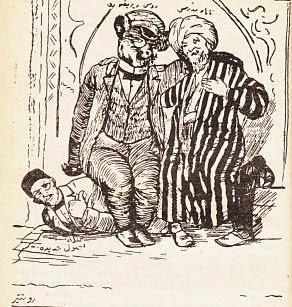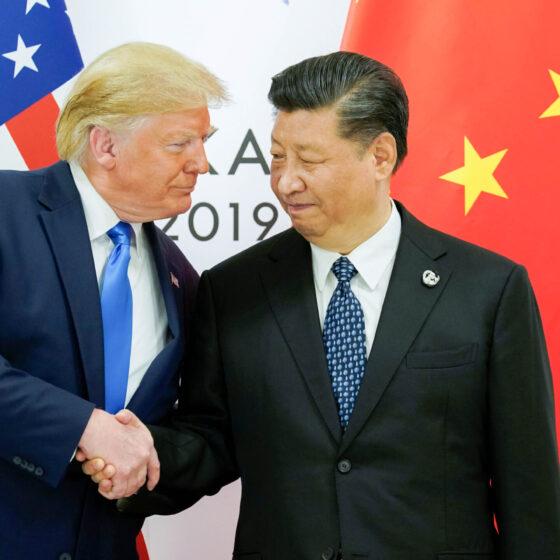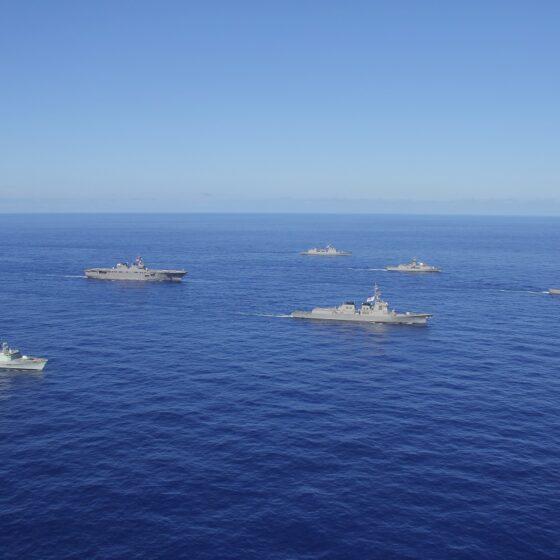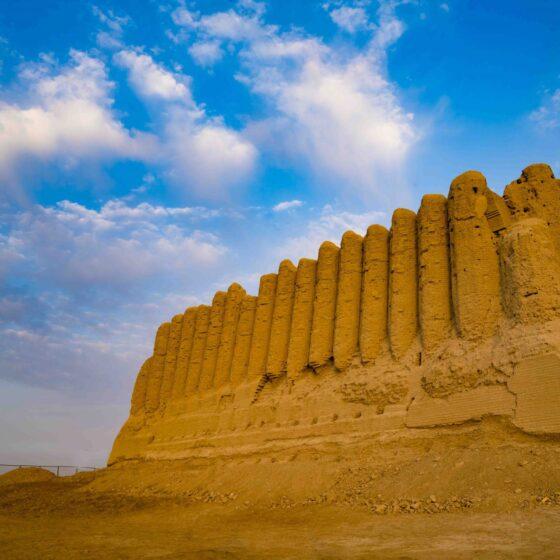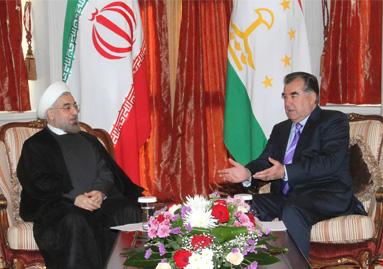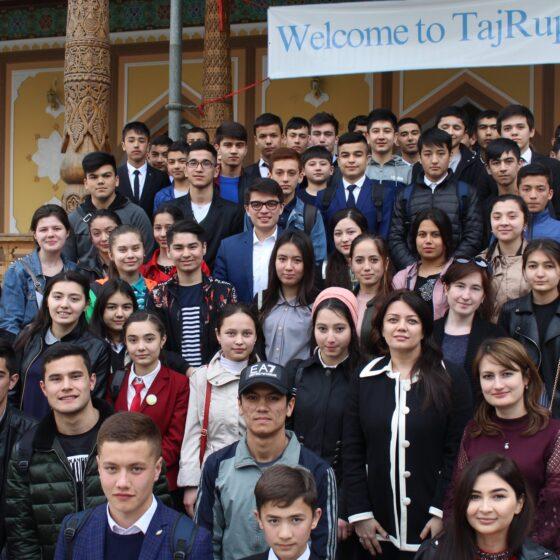
India’s Prime Minister Narendra Modi visited Central Asia two years ago. Has anything changed in India’s policy towards CA since his tour? Is there any new project worth to discuss?
Prime Minister Modi visited all five Central Asian republics in 2015 after Shanghai Cooperation Organization summit in Ufa, Russia, which actually proved a smart strategic and diplomatic feat for paving the way to overcome several predicaments that have so far stymied India’s role in the region though much time has been lost to reconnect with the land of Sakas (Kushans).
You know, India’s stakes go beyond the energy and security aspects. It is not only transactional. It is civilizational. Prime Minister Narendra Modi’s visit to Kazakhstan, Uzbekistan, Tajikistan, Turkmenistan and Kyrgyzstan – was therefore not only symbolic, but was also significant in terms of re-energizing Indian diplomacy in a strategically important region lying in the Indian backyard. The visit was also important for widening the strategic perimeter and imagination among our own people towards the region beyond Pakistan and China.
For example, Uzbekistan is the nerve centre of Central Asia. Zahir-ud-Din Babur came from the Ferghana Valley. Cultural contacts between India and Uzbekistan are deep and they cannot be wished away. Oil-rich Kazakhstan has drawn India’s immediate attention. Turkmenistan is relevant for the TAPI pipeline, if at all it works out. Kyrgyzstan has huge hydropower potential and, like Mongolia, it is a democracy. India enjoys historical affinity with Tajikistan. The country is strategically critical for India in the context of the Af-Pak region.
Об отношениях Индии и Центральной Азии — дипломат Пхунчок Стобдан
As Central Asia gets de-Europeanized, there is a major power rivalry afoot. The region is already getting swamped by the Chinese as well as by extremist forces. China has already pushed for the interlocking of economic and security interests in Central Asia. It has finally broken a century and half of Russian monopoly in the region. It is China that now controls the flow of goods and services to and from the region though without eliciting any tangible Russian opposition. Nor has it stirred any containment by the United States and India.
India views the fragility of Central Asia as a source of insecurity because the region is the northern frontier of the Islamic world. Behind the current secular settings, a major shift is underway towards political Islam. The Islamic Movement of Uzbekistan (IMU), which has links to al Qaeda, is well entrenched. Worst, even the Islamic State is heavily recruiting in Central Asia. So far the regional regimes are insulated from falling by Russia, but future still remains uncertain. Russia’s presence was a preferred option for India all along. But its influence in the region is waning. Russia is instead seeking convergence with China in the face of its own worsening standoff with the West. India is equally concerns about these issues.
Certainly, India has so far does not have a cogent Central Asia policy. But, after PM Modi’s visit, a clear policy is taking a shape. India wants to be a part of the regional economic integration process in Eurasia. But the main problem it faces when it comes to Central Asia is the lack of direct geographical connectivity. Routing through Iran and Afghanistan or via the International North-South Transport Corridor (INSTC) are important pursuits, but even the best pursued connectivity and pipelines projects like the IPI and TAPI have not seen the light of day. Of course, these options should not be foreclosed, but the delays involved in actualising them have gone against India’s economic interests.
To overcome India’s geographical isolation from Central Asia and to increase India’s stakes in the Shanghai Cooperation Organisation (SCO), PM Modi has already taken several initiatives that are now visible.
The importance of touching base with the region was therefore critical and the Prime Minister’s visit may have imparted the necessary momentum to India’s ties with these countries. Modi’s activism was also welcomed in Central Asian countries, though they know that India has already missed the bus and it has a lot of catching up to do.
Central Asians had high expectations from New Delhi from the beginning, but Indian lacked behind other powers in its commercial ties with region which is paltry USD 1billion.
Of course, many Indian analysts viewed the visit as an important opportunity to counterbalance China. But this could be a flawed assessment.
Of course, there were no big ticket items to turn the spotlight, but the Prime Minister’s own strong presence seems to have created a huge excitement, perhaps no less than the marks that Raj Kapoor, Indira Gandhi and Mithun Chakraborty had earlier made on the people’s imaginations. Modi has become a factor in Central Asia and this is important. In fact, it has been decades since any popular Indian leader visited these countries and they felt nice about it. Such a visit was long desired; as one friend of this author put it, we needed such a thing because Indian leaders have always appealed to everyone in Central Asia.
The prime minister’s visit had a strong cultural connotation though the past links with Central Asia have not yet given the desired results. Importantly, he touched upon the shared Islamic heritage and Sufi traditions. One, however, wonders whether the Kubrawiya, Nurbakhshi and Yasavi Sufi traditions are still preserved in India. Modi gifted a reproduction of Khamsa-i-Khusrau to Islam Karimov. Hopefully, the Uzbek dictator liked the gift. Linguistic links with the Tajiks were also invoked by Modi. Clearly, the visit entailed a strong joint socio-cultural rhetoric – references to Yoga, Hindi, Sufism, IT, among others, added substance to India’s soft power.
Combating terrorism, cementing defence, economic and energy ties and enhancing connectivity were recurring themes in the Prime Minister’s discussions with the leaders of these countries. In all, the 21 bilateral agreements signed with the five countries were desirable, although they have already been in practice for the last two decades with little or no success. The reasons are numerous and intrinsic – they are hard to triumph over.
The connectivity issue, i.e., the International North South Transport Corridor (INSTC), Interest joining the Ashgabat Agreement, Chabahar projects etc were discussed with the leaders there. During the visit, Modi mooted the idea of bypassing Afghanistan to link with Central Asia through surface, digital and air connectivity. Many wonder whether his visit was linked to India’s growing disenchantment with Afghanistan’s increasing closeness with Pakistan.
The flurry of agreements on defence and security were also signed. It may be have only symbolic value, but India maintains the Ayni airbase in Tajikistan after it was refurbished by India at a cost of USD 70 million in 2007. India has also built a military hospital at Farkhor. Defence co-operation with Kyrgyzstan has been going on for a few years and this includes setting up a Mountain Bio-Medical Research Centre in Kyrgyzstan.
Combating terrorism especially the threat posed by the Islamic State was one of the main agenda. India sees terrorism as a “threat without borders”. But Central Asia, despite being located in the proximity of the main source of terrorism, is not a hotbed of terrorism.
Of course, some of the Central Asian states are also important for India because they are members of the Eurasian Economic Union (EEU) with which wants to sign a Free Trade Agreement (FTA) soon. Inking of a MoU for co-operation between the Indian and Kyrgyz Election Commissions was significant issue.
Delhi is the closest capital to Central Asia, but yet no major cooperation
initiatives. How does India generally view CA and can it offer its own Silk Road project to the region? There could be some interesting potential in economic field – IT, logistics, and trade. What holds Indian businesses from investing in CA?
Of course, for India to engage in Central Asia has not been so conducive. There is the non-competitive nature of our trade ties with the region because of China’s geographical proximity there. China is able to fulfill their immediate economic needs. China also has its strategic motives to be active in the region.
But we have our normal economic ties with the countries in Eurasia. Of course, the contract with Uzbekistan for the supply of 2,000 metric tonnes of uranium signed in 2014 was important. The visit to Tashkent by Modi was significant this way.
Three path-breaking developments were achieved. Firstly, Nazarbayev’s daring decision to sign a major contract for a renewed long term supply of 5,000 Metric tonnes (MT) of uranium to India during the next five years is the most significant takeaway of the Prime Minister’s visit. This is in fact proving more promising than achievements on the hydrocarbons side.
Secondly, India’s ONGC-Videsh Ltd (OVL) had finally made its first breakthrough when Modi launched the drilling operations for oil exploration in the Satpayev block on 7 July 2015.
Thirdly, the Ufa Summit and Modi’s visit to Turkmenistan may also have possibly shown the way finally even for the TAPI pipeline to see the light of day. In Ashgabat, the Prime Minister called the TAPI project a “key pillar” and pushed for its realization “quickly”.
Central Asian oil and gas reserves offer alluring possibilities for India. However, the OVL’s pursuits have been anything, but simple as the Kazakh authorities repeatedly cold-shouldered its bidding efforts. The drilling operation in Satpayev was a good success.
Make no mistake, Russia is and will remain an important factor for India’s ability to do business in Central Asia. The countries of the region are still integrated with Russia. They do not have complete freedom of manoeuvre to conduct foreign relations without having a concord with Russia. Russia still favours India as a countervailing measure against China’s monopoly on Kazakhstan’s uranium exports. As long as India’s fuel imports remain modest and ties with Kazakhstan do not get deeper, a major hurdle is unlikely. But, given growing Russia-China convergence, India’s nuclear ties with Kazakhstan will be conditioned by changes in the geopolitical climate just as geopolitics decisively undermine the import of hydrocarbons from Central Asia.
India’s premature discounting of Russia was a mistake. In fact, such a policy line has not only delayed India’s success but also made its diplomacy in Central Asia a more arduous exercise. India’s energy requirements in Central Asia suggest a continuing positive relationship with Russia.
Central Asians undeniably consider India to be a reliable, trustworthy and predictable partner. But at the same time they want India to be a good performer as well. Kazakhstan has realised the importance of engaging India and there are many things going on between India and Kazakhstan.
What do you think of the new regional dynamics with a new Uzbekistan President Mirziyoev? What’s your view on regional cooperation in CA?
While India is entering the Eurasian integration path, it is well aware about the changing political dynamics within Central Asia. Following the recent change of leadership in Tashkent, the nature of regional outlook is changing in favour of intra-regional cooperation. The new government in Uzbekistan, led by President Shavkat Mirziyoyev, appears more open to boosting the country’s relationships inside and outside the region. We see lot of positive trends in this regard. And, if the trend moves ahead, it wouldn’t be always easy for China to overcome the broader set of issues that come in the way for realising its BRI vision. Also to counter such a strategic move, Indian response should include the interplay of its policy between trade, investment, connectivity and cultural ties with other SCO states.
How about security? How do you assess the security situation in Afghanistan and the region? What is India’s attitude towards potential increased Russian involvement in CA because of Afghanistan threats?
India’s policy approach towards Afghanistan has been very consistent. We support the governmental rule, exception being the rule during Taliban because we cannot accept the government led by terrorists. So that was the only exception. So irrespective of what government came to power in Kabul, India had supported that. India involved in the reconstruction process in Afghanistan. And politically we stand with the government of Afghanistan for resolving the issue peacefully and keeping the extremists and terrorists away from the power because we do not see the difference between the Pakistani ISIS and the Taliban, it has been created by the Pakistanis. At the same time, especially in the absence of a coherent thinking in Afghanistan we have seen many formulations emerging to resolve the conflict there. But things do not see any change and perhaps this is the intention of major players to keep the pot in Afghanistan keep boiling. For example, Beijing has been hedging its own bets by formulating a sub-regional security grouping involving Afghanistan, Pakistan, and Tajikistan. China-Afghanistan-Pakistan foreign ministers’ dialogue mechanism to get the Afghan Taliban to join the reconciliation process is a worrisome thing for India. Afghanistan has also pledged closer cooperation on Belt and Road Initiative. President Ghani cherishes the friendship with China. Here, Russia and China have talked about reviving the SCO Contact Group on Afghanistan that was suspended in 2009. Of course, they see that the Western powers, NATO etc have left with no apatite left for intervening Afghanistan. To what extend India can play a role to formulate the regional consensus on an Afghan peace under the SCO is a question. Let us see how it works. But India is committed to contribute towards the civilian reconstruction of Afghanistan.
Finally, China. What are implications from the last SCO summit and why did India join? What is a principal difference in Indian attitude towards SCO and BRI (Belt Road Initiative)?
India has just joined the SCO and our Prime Minister has expressed full faith in the SCO charters and promised to play a constructive role in the regional grouping. This time, India has laid down its vision and its aspirations in the SCO, of course, with a caveat that a) SCO members states must respects each other’s territorial integrity and b) there should be zero tolerance for terrorism under the SCO. However, the practical implications of SCO are unlikely to be dramatic. Except for political rhetoric, member states will continue to function through bilateral and other multilateral engagements, though China could seek inclusion of bilateral contents in the SCO’s ambit.
If the regional cooperation and connectivity is pursued under the SCO, it will have to press Pakistan to open up its borders for greater exchange on trade cooperation under Afghanistan Pakistan Transit and Trade Agreement (APTTA). Otherwise it makes no sense. If Pakistan is positive, it can contribute to better relations between Pakistan and India. However, we cannot overlook the terrorism aspect when it comes to Pakistan. But, given its track record in the SAARC and ECO, Pakistan’s involvement would prove detrimental for SCO’s growth. In fact, none of the trans-border regional integration mechanisms involving, including the QTTA, APTTA, the Cross-Border Transport Agreement (CBTA) under CAREC, the Transit Transport Framework Agreement (TTFA) under ECO and SAARC Motor Vehicles Agreement among many others have not been allowed to realise their full potentials due to unconstructive role played by Pakistan.
Fight against the ‘three evils’, is a central pillar of consensus between the current SCO members,” How SCO can be used to hold Islamabad accountable on the issue of terrorism. SCO should make it difficult for China to unduly favour Pakistan or ignore the way it deals with these.
SCO decisions being arrived at through consensus would enable India to negotiate outcomes which serve its interests in regional security and stability. Hopefully, the SCO can provide India with the opportunity of working together with Russia and the Central Asian republics. It could help resolve at least some problems. India could use the SCO atmosphere for building better convergences with China and Russia. Some joint India-Russia initiative for undertaking projects in Central Asia is possible.
With regards to OBOR, India is not opposed to any connectivity projects in Asia including China’s BRI. India only has reservation and objections about such transport corridor projects violating Indian sovereignty and territorial integrity such as the way CPEC violates that passes through Pakistan occupied Kashmir which we consider legally as a part of India. But India has joined the financial institution like the Asian Infrastructure and Investment Bank (AIIB) which is fully subsumed in the BRI. India is second largest contributor to AIIB and Indian money is involved in the Bank. AIIB has provided a $100m loan to co-finance the Shorkot-Khanewal section of the M-4 motorway in Pakistan, $27.5m for the Dushanbe-Uzbekistan Border project in Tajikistan and a $300m for Tarbela 5 hydropower project in Pakistan. This means that India is already part of the OBOR or CPEC projects.
